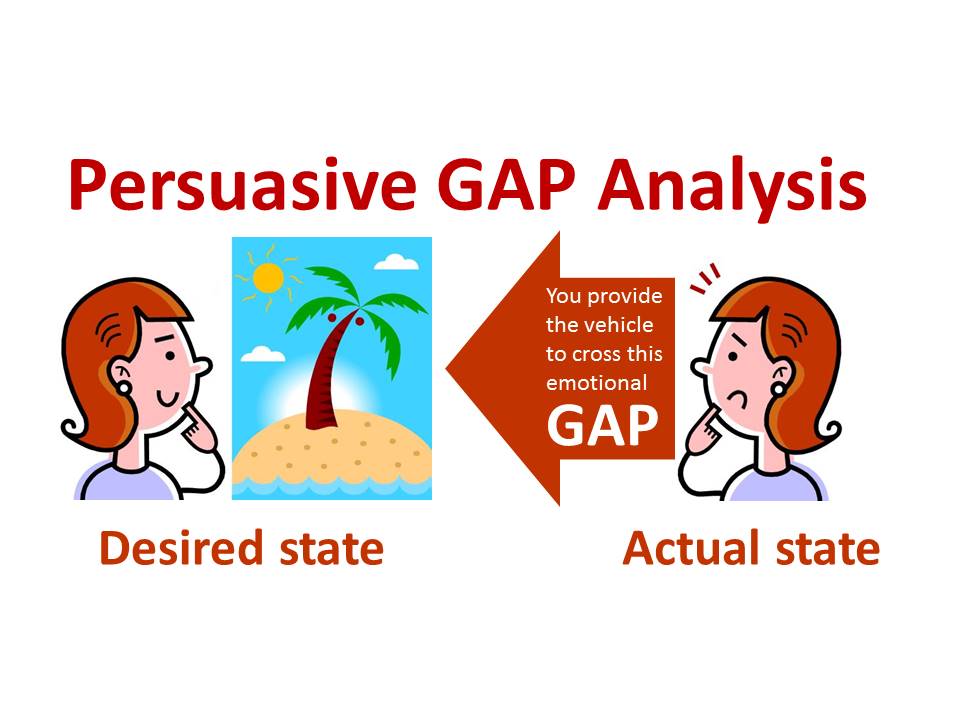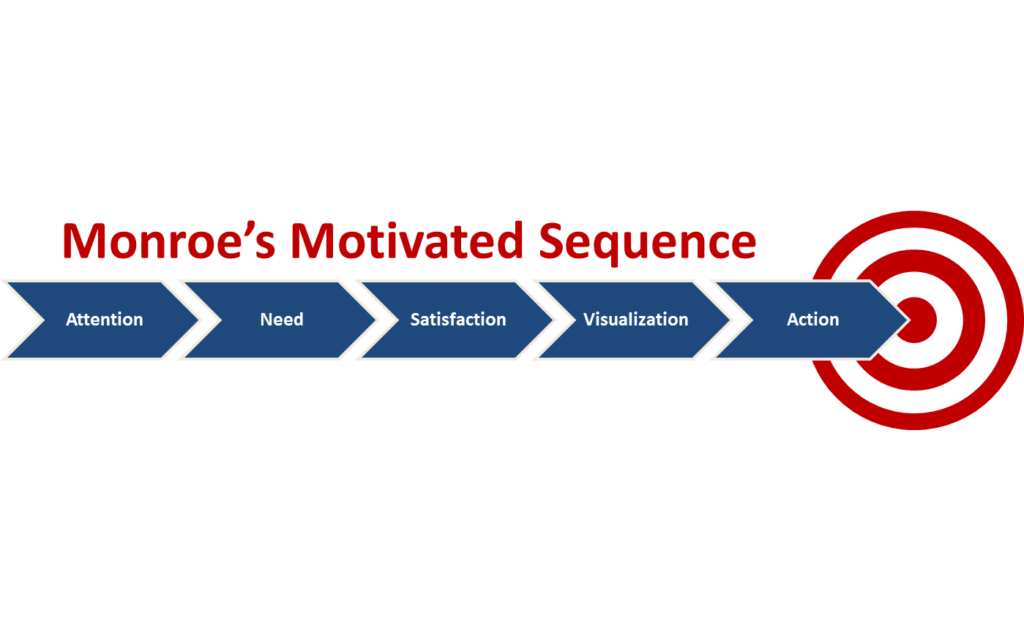In a recent discussion on the Official Toastmasters International Members Group Facebook Page, member Merv Olsen, asked “What are your thoughts on the ‘Monroe Motivated Sequence’ approach to persuasive speaking?”
You might think that this question doesn’t apply to you because you don’t give persuasive speeches. Don’t be too quick to dismiss.
Ultimately, almost every speech is a persuasive speech. An informative speech persuades the listener to learn something. An inspirational or motivational speech persuades the listener to change thought or action. Even an entertaining speech persuades the listener to enter a world of levity, if only for a few minutes. Most speeches could be more powerful with elements of persuasion.
Consider how you might apply one of these persuasive speech organizational patterns (the structural bones) to your next speech, persuasive or otherwise. I’ll save Monroe’s Motivated Sequence for last:
Proposition to proof–Use this pattern when you want the audience to adopt an idea to which they are strongly opposed. In this speech structure, you make a claim (the proposition) and then list reasons (proofs) to support the claim
Problem/solution–Use this pattern when you want to promote a particular solution to an audience.
Cause/effect–Use this pattern when you want the audience to adopt a new belief about the relationship between two things (the cause and the effect).
Comparative advantage–Use this pattern when the audience already agrees there is a problem, but also knows there are many possible acceptable solutions. You compare the alternative solutions and show why your solution is the best one.
Criteria satisfaction–Use this pattern when the audience might initially oppose your solution. You show how your idea meets what the audience needs by first establishing and getting agreement on the necessary criteria and then showing how your solution meets the criteria.
Monroe’s Motivated Sequence–Use this pattern to convince an audience to take action.
Five separate steps characterize this pattern (quoting Merv Olsen’s original post, which quoted the Persuade with Power project in the Toastmasters Competent Communicator manual):
1. Attention. Seize the audience’s attention with your opening and direct that attention toward your topic. “Our rapidly escalating property taxes are supporting a spending spree by our government.”
2. Need. State the existing need or problem, explaining why it’s important to listeners. “Property taxes must be lowered and government spending brought under control.”
3. Satisfaction. Present your solution to the need or problem, showing how it meets the need or solves the problem. Support your position with evidence. “Proposition X will reduce property taxes and limit government spending.”
4. Visualization. Draw a picture of future conditions, intensifying audience commitment to your position. Show how things will be if your solution is adopted or what might happen if it is rejected. “If this proposition fails, our taxes will continue to escalate, and many people will lose their homes.”
5. Action. Turn the agreement and commitment you’ve gained into positive action or attitude by your listeners. “Vote ‘yes’ on Proposition X.”
My response to Merv’s question about Monroe’s Motivated Sequence:
“It is effective, but I usually change the order, especially if I am doing it as an interactive presentation. I like to create the emotional gap between where the audience would like to be (visualization right after the attention step) and where they are (need) before moving on to showing how my solution will close the gap (satisfaction) and then ending with a call to action.”
This changed order is highly effective when you have an audience of one (e.g. you are meeting with a prospective client for a professional service you offer). It is also effective in a business proposal (see my business proposal structure outline). This “create a gap” concept, contrasting the desired condition and the actual condition is one I use frequently with prospective clients. I can then position my services as a solution to close the gap.
Commenter Bob Kienzle puts it another way, “Diane, my recommendation is to create Visualization during the Attention stage by telling a story that envisions the future and then to expand on that story during the Visualization stage. You need to explain the problem (Need) and make the audience care about the problem before the solution (Satisfaction). Mixing up the stages make work at times, but the psychology studies and commercial studies of MMS have the stages in order for a reason.”
Do you need to create a presentation quickly? Do you want a repeatable method for creating presentations? Take the FREE online mini-course: Speech Zero to Hero in One Hour: Create a Presentation in an Hour that Will WOW Your Audience!




